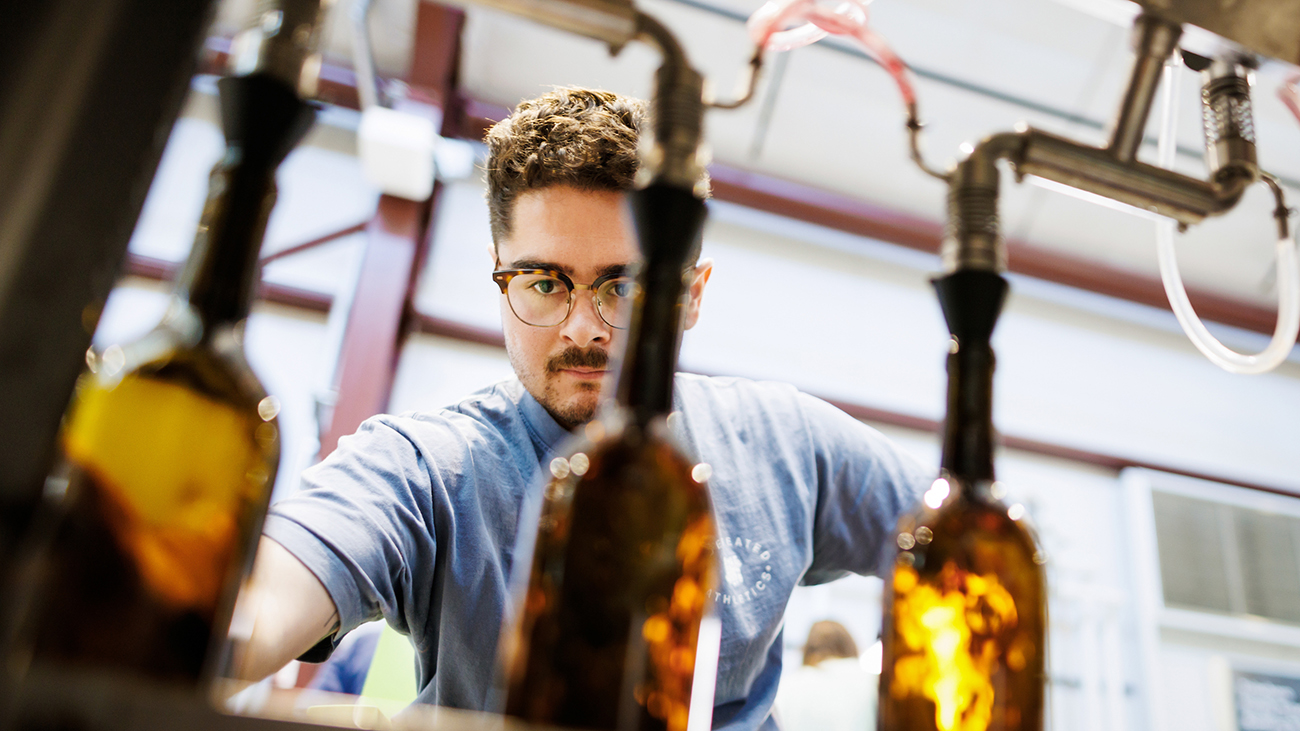
Any good wine is the result of a multitude of factors: the health of the vines, the quality of the earth, the care and skill of the winemaker, chemistry and biology mingling in one perfect glass.
At Cal Poly, a great wine education comes down to two factors: the Learn by Doing philosophy, and the collective investment of leaders from across the California wine industry.
In fall 2022, Cal Poly opened the JUSTIN and J. LOHR Center for Wine and Viticulture, where students in the nation’s largest undergraduate wine and viticulture program can study every aspect of the industry. The $23 million, 16,000-square-foot facility was funded entirely by wine industry partners.
The facilities are designed to give students that crucial experience in all three major areas of the wine industry: viticulture, or the growing of grapes and vines; enology, or wine production including wine chemistry and sensory analysis; and wine business.
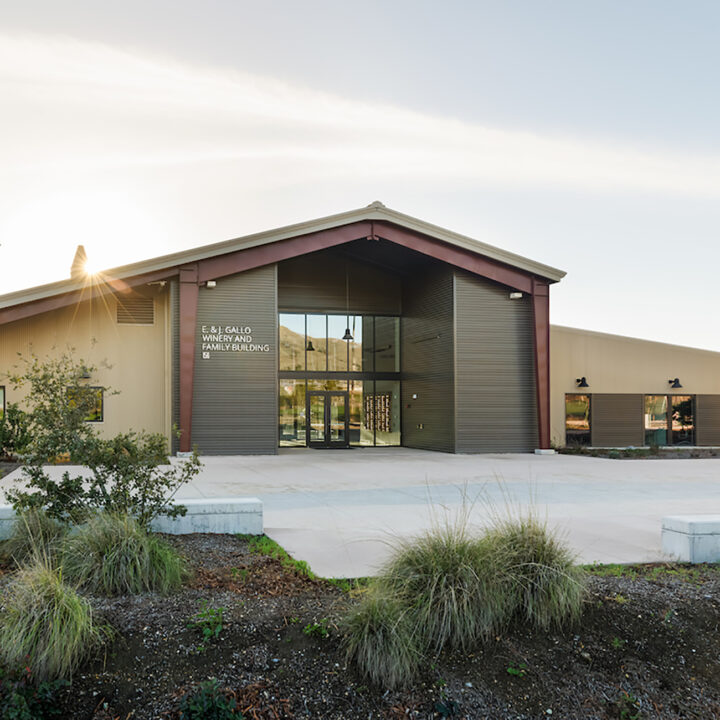
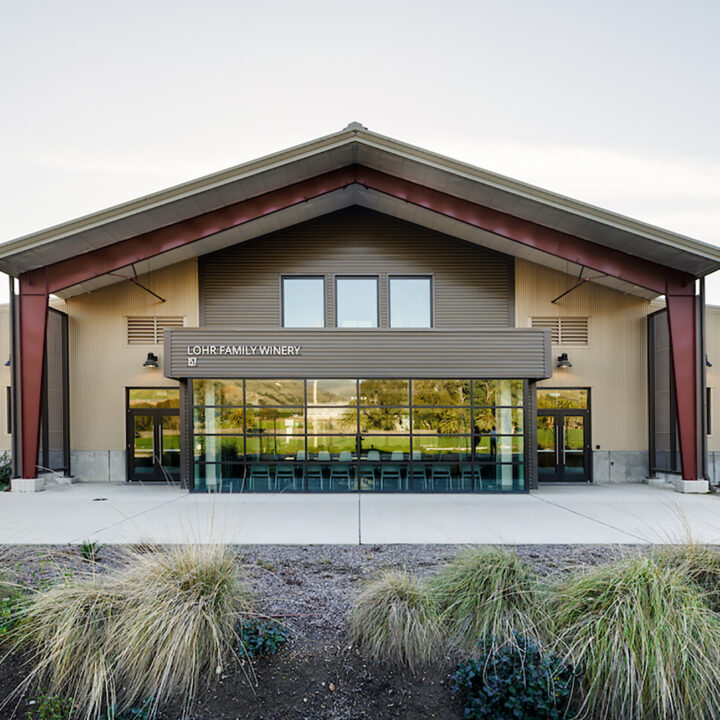
“Because of how much the industry has supported us, we want to deliver what the industry needs,” said Benoit Lecat, head of Cal Poly’s Wine and Viticulture Department. “That is students with the skills to be operational in any winery when they graduate, and research outcomes so that the industry can use our knowledge to make better wine.”
The center is divided into two buildings. The E. & J. Gallo Winery & Family Building houses a variety of teaching, research and gathering spaces, including classrooms like the John G. Franzia Family enology lab and the Wagner viticulture lab; study areas like the Keith Patterson Lab and the Sauret Lab; the J. Lohr sensory analysis lab; and the Bill and Cheryl Swanson/Center of Effort conference hall and event space.
The Lohr Family Winery Building is home to production of the three wine categories — teaching wines, research wines, and a full-scale professional production winery bonded for up to 5,000 cases and currently producing about 2,000, all run by students under faculty supervision. The winery building also includes two labs: one available to any student in the program to run basic wine sample analysis; and the McMannis Family Research Lab, designed for analysis of liquid or volatile compounds in wine.


In addition to the facilities themselves, industry partners provide funding for or direct gifts of equipment and supplies. The Beckstoffer Fermentation Hall includes a crush pad provided by Scott Labs. Couch Family Wines provided a state-of-the-art gas chromatography-mass spectrometry array. Westec provided the fermentation tanks, Trinchero Family Estates sponsored the temperature-controlled barrel rooms, and World Cooperage 1912 donated the barrels. A partnership with Duckhorn Portfolio, Inc., provides a collection of wines for sensory evaluation, and several wineries even donate fruit to round out what’s grown on campus.
“It’s quite an upgrade — it gives the students a much better experience and more proper training for going out into industry,” says Jim Shumate, who manages the facility’s commercial production winery and its team of students. “With the new facility and a lot of the equipment that we’ve got, we are probably the top of wine and vit programs in the U.S., and if not, very close to it.”
The donor-funded facilities and equipment put Cal Poly on par with most mid-sized wineries in the industry — and in some ways, far beyond what most production wineries are capable of.
“The wine industry is very much about experience, whether you’re tasting the wine or you’re in the vineyards,” says Jerry Lohr, founder of J. Lohr Vineyards and Wines in Paso Robles, and one of the facility’s major supporters. “To really be a first-class viticulturist or winemaker, it’s good to have first-hand experience early on.”
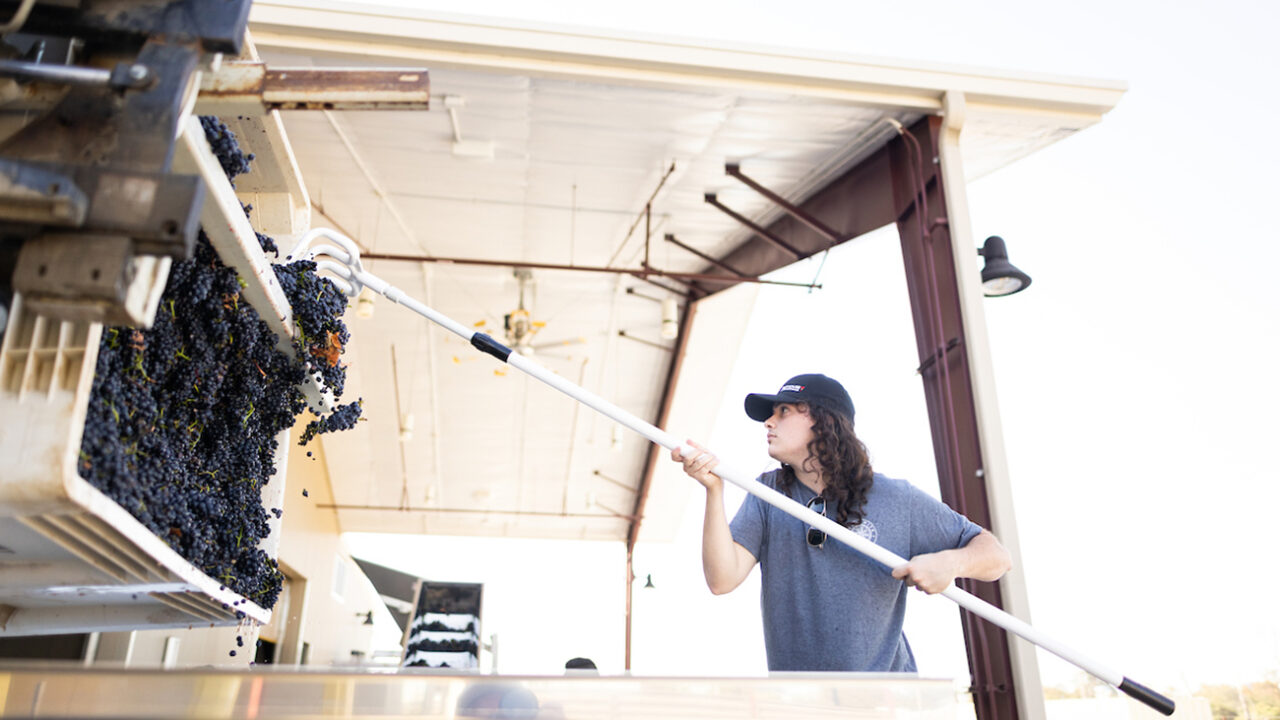
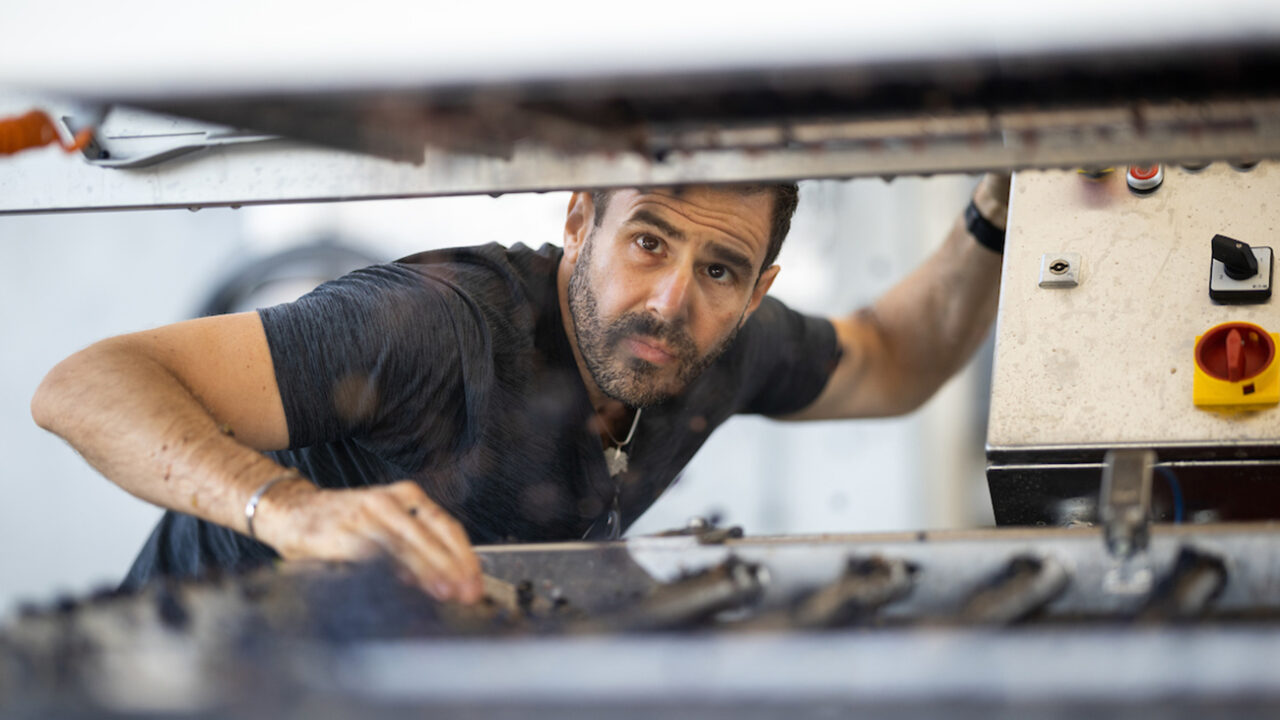
Fourth-year wine and viticulture student Gabriela Rivas recently completed her first harvest season as an intern at the Cal Poly Winery, and got her hands dirty in just about every aspect of the process: assessing fruit at the Trestle Vineyard on campus, sorting the fruit using the winery’s state-of-the-art optical scanner (provided by Pellenc), prepping and operating equipment, and doing lab work to calculate potential alcohol yield — all work made possible by the new facilities and under the supervision of faculty experts.
“This was my first harvest, but I feel like I’ve done two harvests because of just how much I was able learn and experience for myself,” she said.
“It’s much more of a thorough education with all the right resources,” said Camilla McFall, another fourth-year wine and viticulture major who is also vice president of the Vines to Wines student club. “When we go into the real world, we are already trained in all of these facilities and equipment most companies have.”
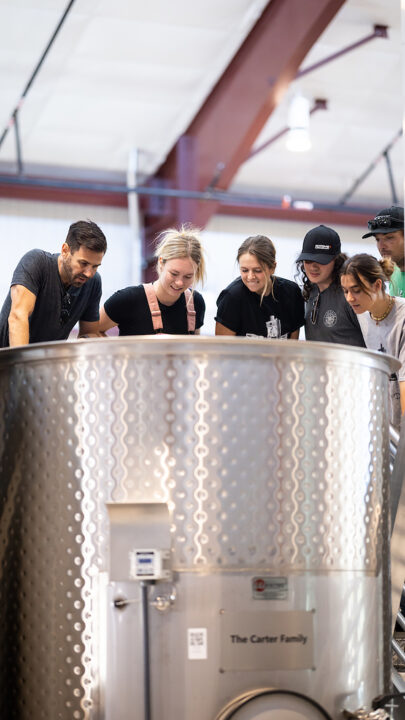
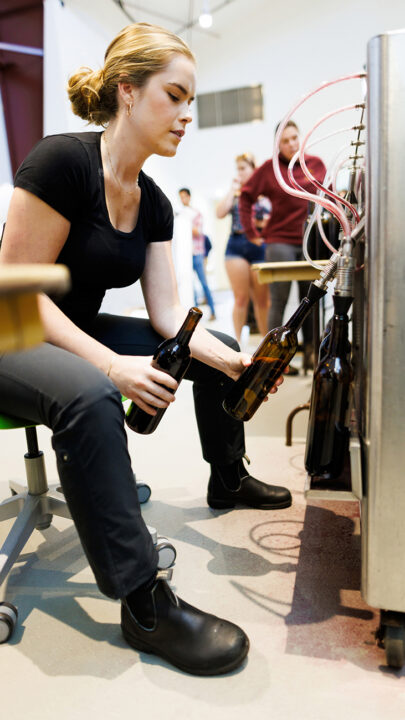
Graduates who are ready day one are a key reason that the California wine industry has invested so much into the center. Another is the opportunity to partner with faculty and student researchers as they pursue answers to some of the industry’s biggest questions.
“Our research is heavily informed by questions that the industry is interested in answering, with a heavy emphasis on grapes from the Central Coast of California,” said professor Federico Casassa, who along with professor Miguel Pedroza runs many of the program’s research projects. “Those questions have variable levels of complexity, but most wineries don’t have the dedicated facilities, capabilities or human resources to answer them — but we can.”
Casassa’s research includes adjusting dozens of variables during the fermentation process to extract a variety of finely-tailored qualities and flavor profiles out of the Central Coast’s classic Pinot Noir grape and many others. He and his students have also developed a way to speed up the aging process for small volumes of wines, to develop samples that can accurately predict how those wines will mature years after fermentation.
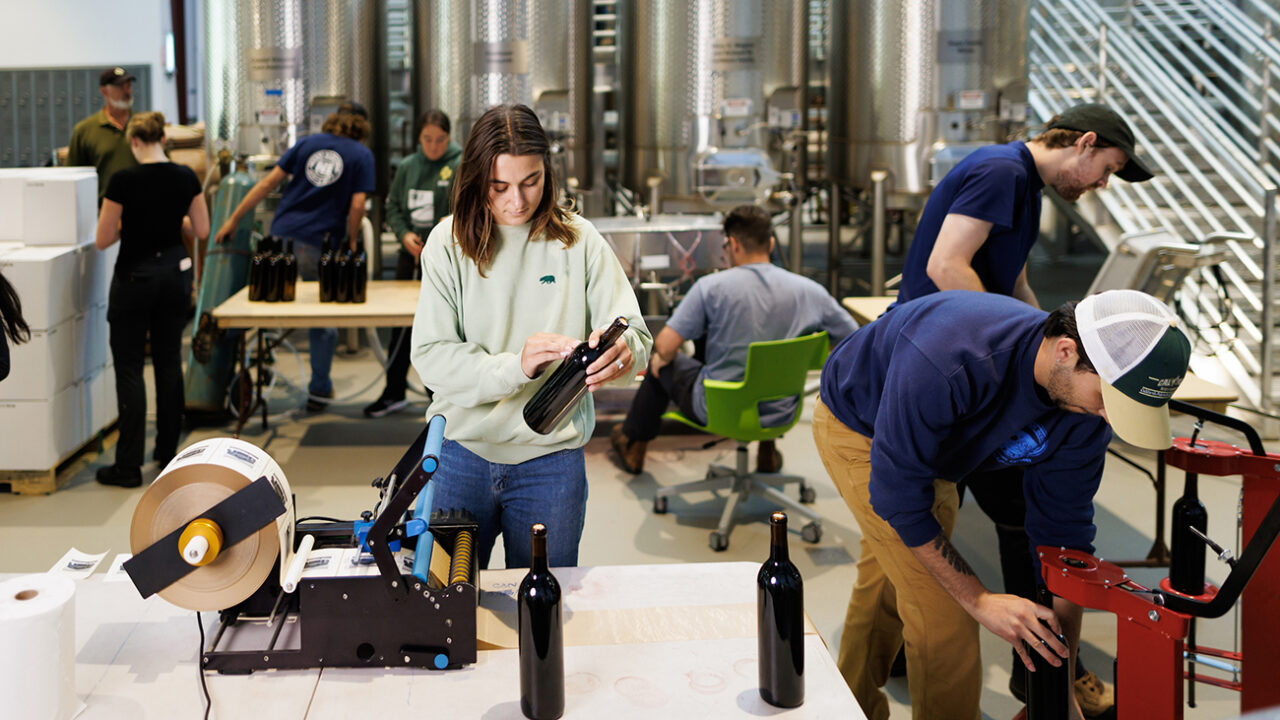
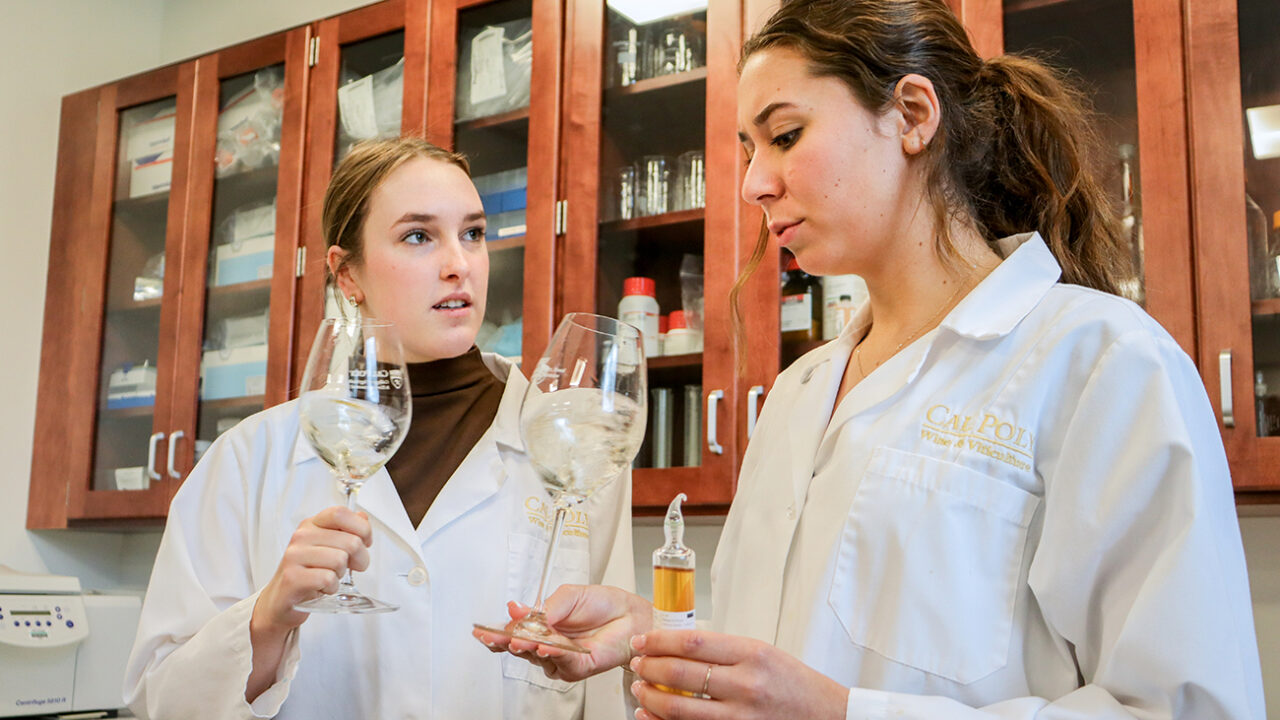
And while those research opportunities benefit the industry partners who learn from them, they are also a crucial hands-on learning tool for the students.
“Teaching and research really go hand-in-hand and complement each other nicely,” said Casassa. “Most of our students that do research end up doing really, really well in the industry, and wineries keep asking for them.”
Between cutting-edge applied research, hands-on teaching opportunities, and the development of graduates ready to hit the ground running, the new JUSTIN and J. LOHR Center for Wine and Viticulture is already paying dividends on the industry’s investment.
“It’s an ‘all ships rise approach’ — by investing in the next generation, we are investing in the future leadership of our industry,” said Molly Scott (Wine and Viticulture ’09), director of grower and community relations at JUSTIN Vineyard and Winery, another of the center’s major sponsors. “Cal Poly’s wine and viticulture alumni are leaders in the global wine industry working in a variety of positions ranging from vineyard managers, to winery owners, to running some of the largest wine companies in the world.”
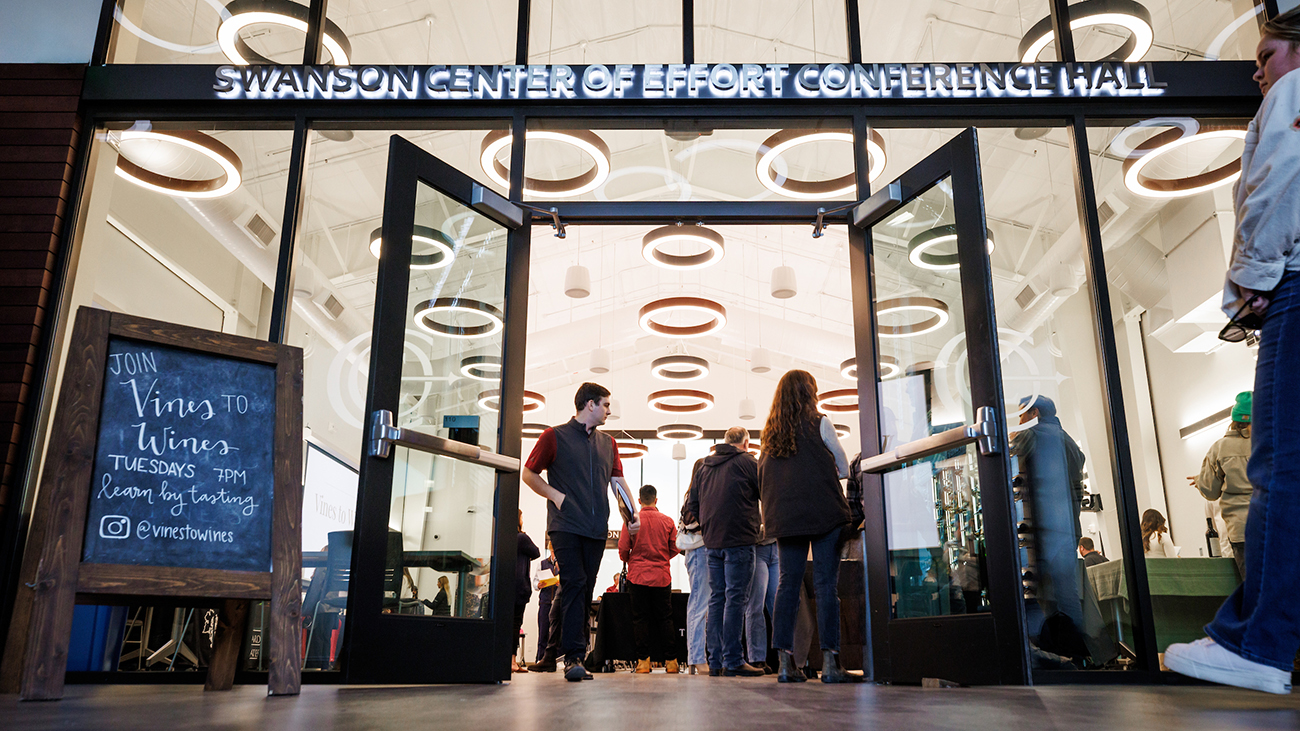
At a recent student-run event hosted by the Vines to Wines Club in the Swanson Center of Effort Conference Hall, students meet with representatives from Central Coast wineries eager to recruit new Cal Poly graduates.


